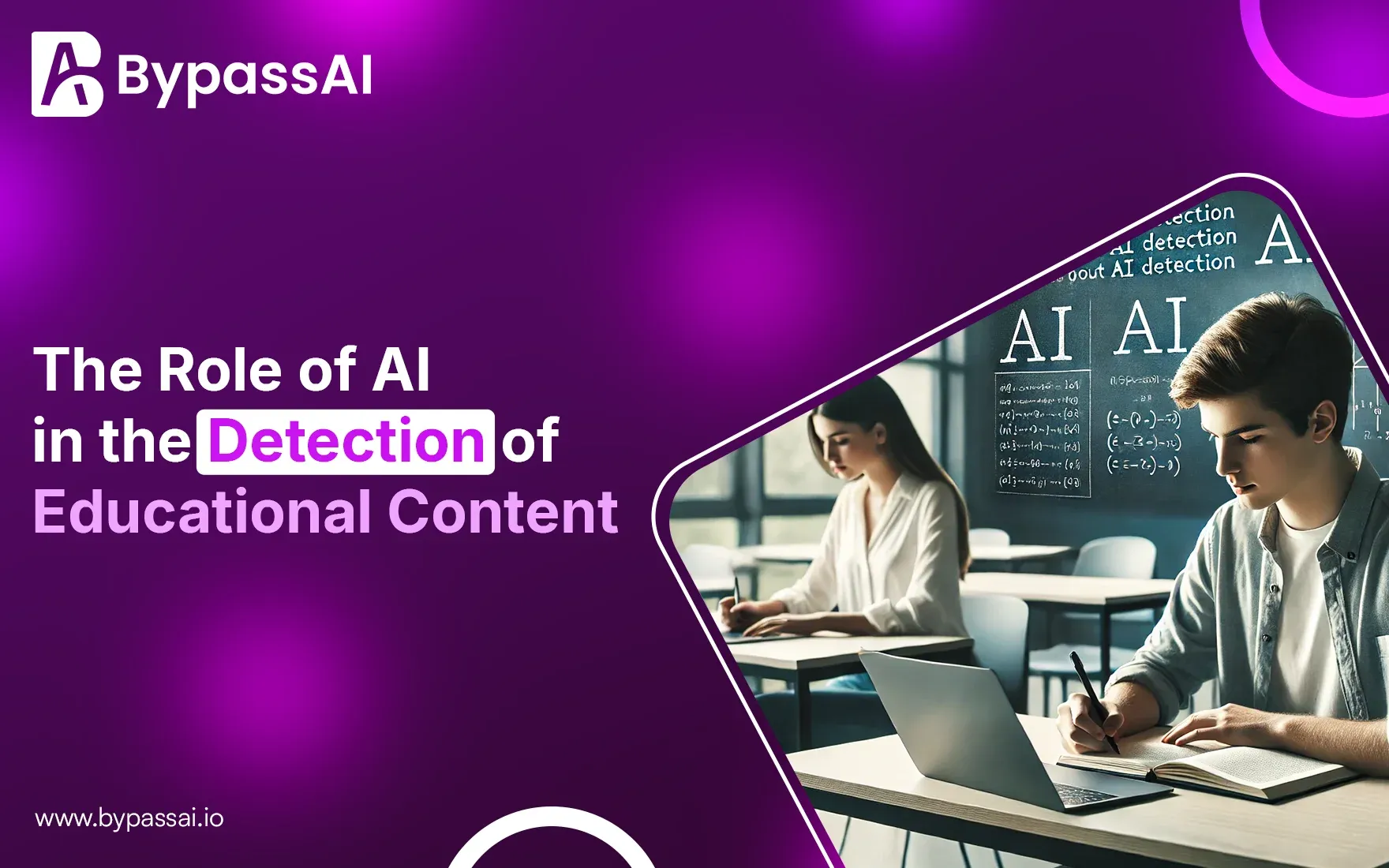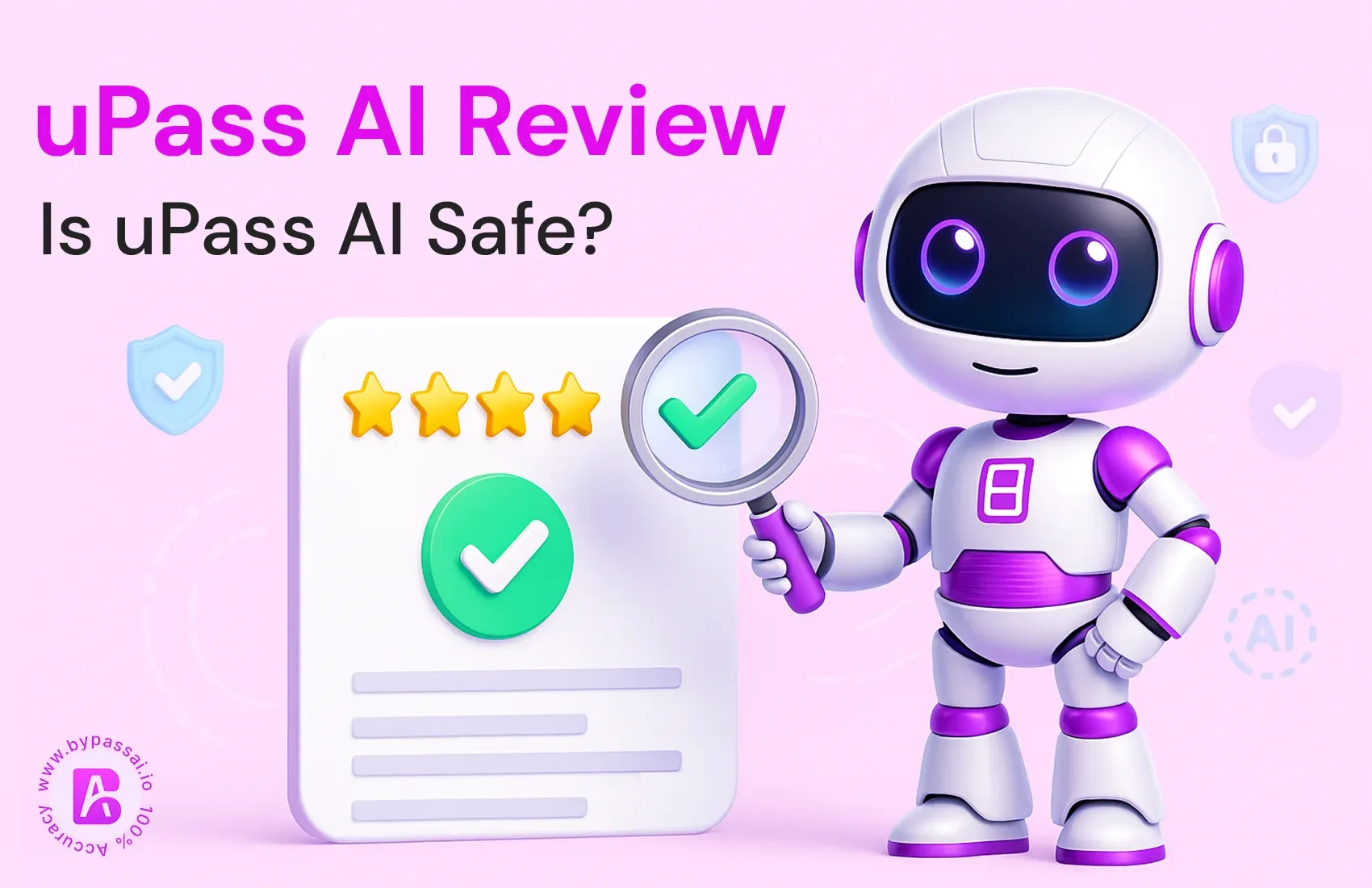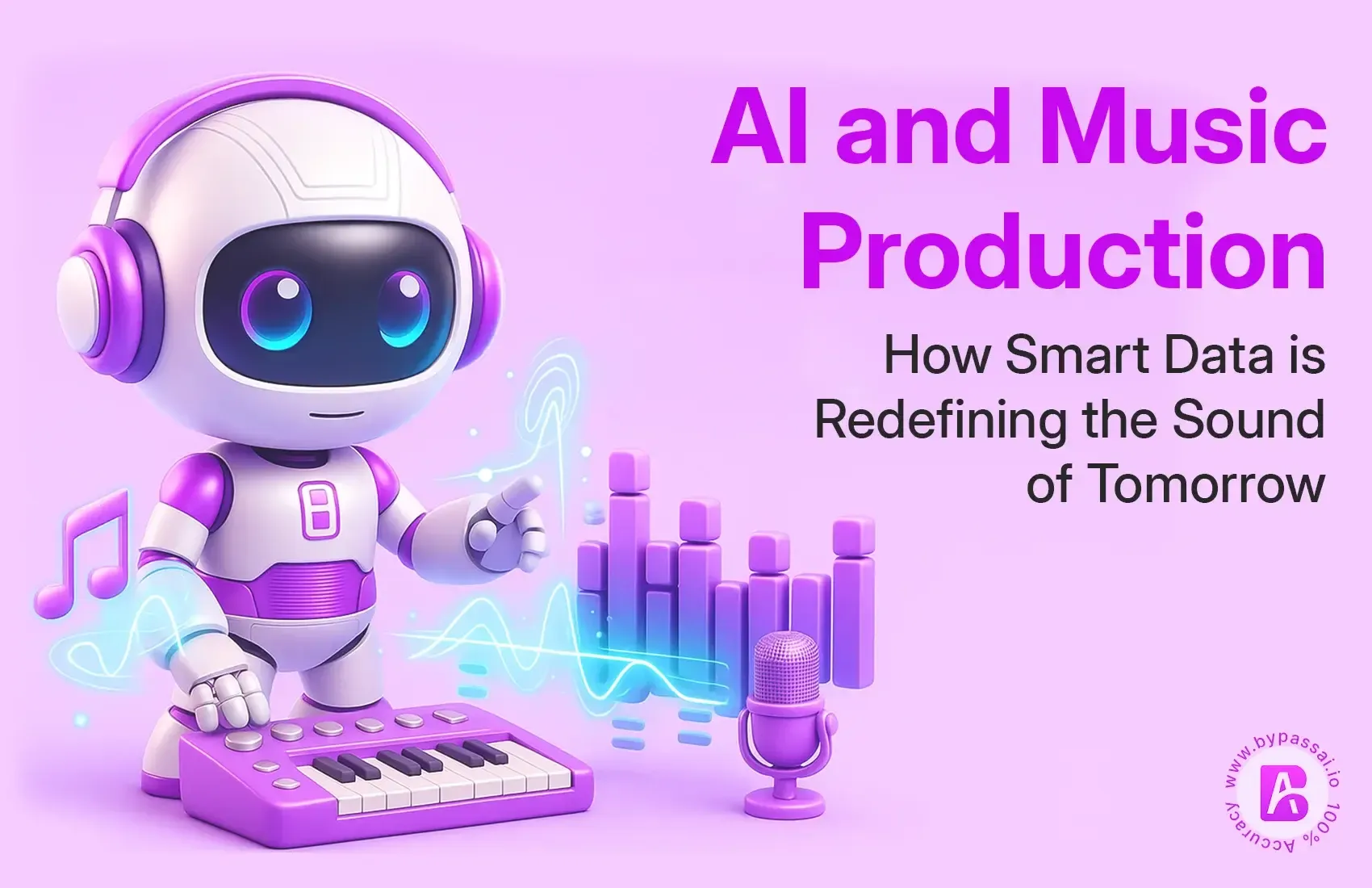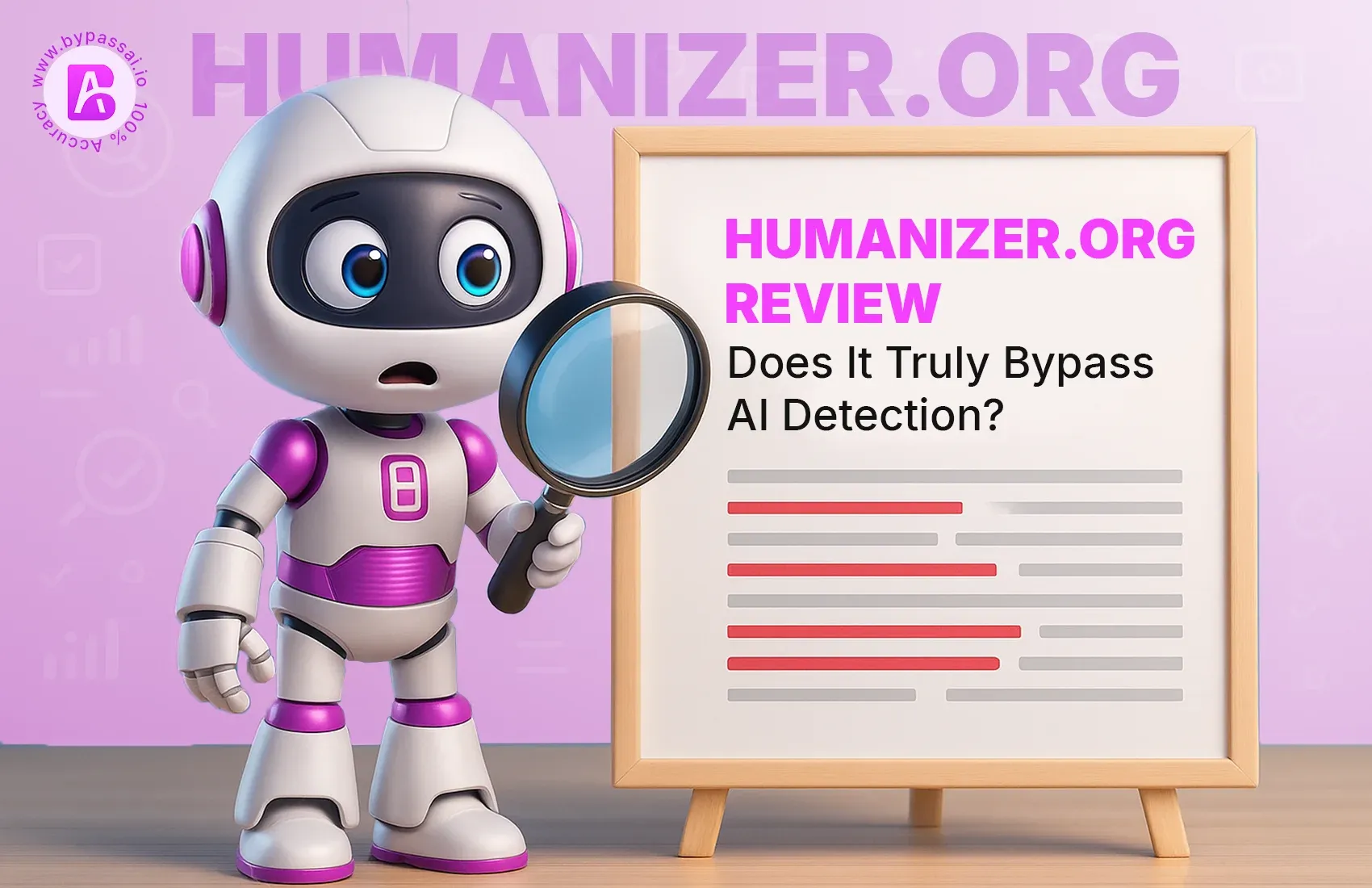Sign In
Welcome to Bypass AI! Sign in to continue your exploration of our platform with all its exciting features.
Forgot Password?
Don’t have an account ? Sign up
Sign Up
Embrace the Future with Bypass AI! Sign up now and let's rewrite the possibilities together.
You have an account ? Sign In
Enter OTP
We’ll send you an OTP on your registered email address
Back to Login
Forgot Password
We'll Send You An Email To Reset Your Password.
Back to Login
Enter OTP
We'll send you an email to reset your password.
Back to Login
Confirm Password
Please enter your new password.
TABLE OF CONTENTS
Quick Summary
What Is AI Content Detection?
Why Do We Need AI Content Detection in Education?
Which AI Detector Teachers Use to Detect AI?
The Future of AI Detection in Education
How AI Content Detection Can Help Address the Risks in Education
Conclusion
FAQs
As artificial intelligence (AI) grows in popularity in education, its applications expand beyond facilitating learning to ensuring academic authenticity. AI content discovery tools have emerged as important resources for educators to identify AI-induced content in student submissions. The article focuses on what role AI is likely to play in discovering education content and tools that teachers are currently using, and what the future has in store for AI in education.
Quick Summary
The integration of AI into education has been associated with a number of benefits and, at the same time, raised challenges to academic integrity. Since there exist AI content detectors in place that help educators identify AI-driven tasks, it is important so that students may be made to engage in real learning processes. This paper discusses the rationale behind knowing the content about AI, the tools used by teachers, and how this technology will shape the future of education.
What Is AI Content Detection?
AI content recognition refers to when artificial intelligence is likely to be used in content. But, since it is becoming increasingly difficult for humans to distinguish between AI and originality, this is often done with the help of AI product identifiers such as BypassAI IO.
These search engines will use a given set of data to create a score through machine learning algorithms and natural language processing techniques that will determine the likelihood of AI-generated text versus an original one.
Why Do We Need AI Content Detection in Education?
Basically, there exist two major reasons to bring AI into education: AI is ubiquitous, and there are some serious risks in implementing this technology in the classroom. These issues are explored further below.
- 1 AI is ubiquitous
- 2 there are some serious risks in implementing this technology in the classroom. Let's explore these issues in more detail below.
The Rise of Artificial Intelligence in Education
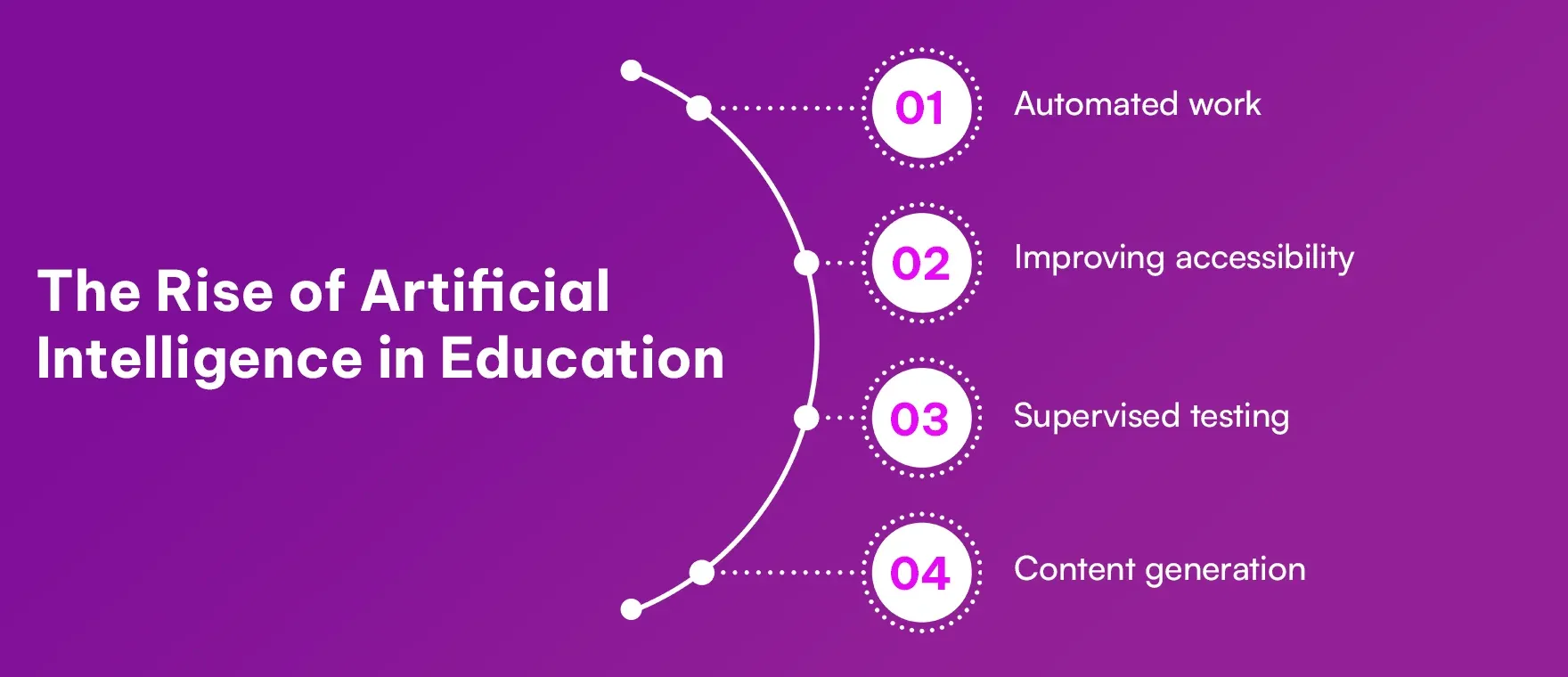
If one considers the use of AI in education, it may come across the mind that students will primarily make use of it for help with their assignments.
And while that's true, AI can do more than that - teachers are getting in on the act, too.
Here are some of the ways AI is being used in the classroom.
Automated work: checking homework, filling out forms, writing essays, presentations, grading tests
Improving accessibility: Multilingual-assisted translation, with real-time subtitles for the hearing impaired
Supervised testing: Keystroke analysis, targeting students via webcam, browser and microphone
Content generation: For students, creating content to help with assignments. Creating lesson plans for teachers, providing resources for students at different reading levels, even college recommendation letters
As you can see, there are some real benefits to using AI in education. But like everything, it has its limits. It is, therefore, important for teachers and students to be aware of the content of AI in order to avoid some major potential issues. This is where AI content recognition comes into play.
What Are the Risks and Limitations?
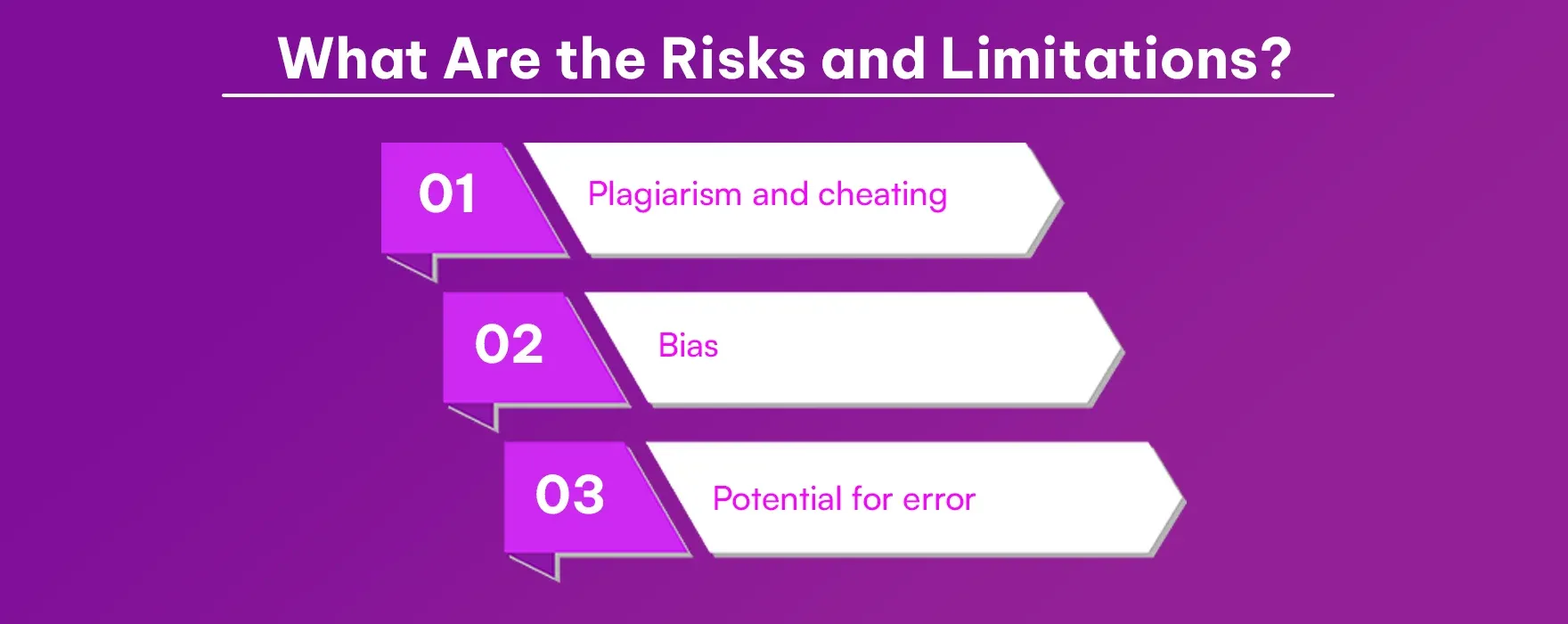
While it has its place in education, the identification methods of AI are essential for the responsible use of artificial intelligence in the classroom. Without being able to distinguish between AI and mainstream, teachers and students face the following risks.
Plagiarism and cheating: This is of course, not a new issue in education, but AI is making it easier than ever for students to cheat through school. And such academic dishonesty has significant consequences for schools and students.
Bias: AI is trained on data sets. So, if there is biased information in any of this data - even unconscious biases - the AI will pick up on the content. This may result in AI-based grading systems giving some students an unfair advantage or resulting in curriculum recommendations that reflect certain stereotypes and biases.
Potential for error: Like humans, AI can make mistakes. One concern is “hallucinations”, where it refers to things that are not really real or never actually happened.
These limitations can have some far-reaching consequences for the student’s future. So, AI content recognition isn’t just a “nice to have” in education - it’s essential.
Also read this article : Top 5 Methods to Detect AI-Written Papers
Which AI Detector Teachers Use to Detect AI?
Teachers often use AI detectors like Turnitin, Copyscape, and BypassAI io to identify AI-generated content in student submissions. These tools analyze text patterns and compare them to vast databases to ensure academic integrity and originality.
1. BypassAI IO
BypassAI IO is an advanced tool specifically designed for educational environments, transforming AI-generated content into human-like content. It uses sophisticated algorithms to ensure that the output is indistinguishable from authentic text, thus helping students maintain academic integrity With a user-friendly interface, BypassAI IO is ideal for teachers and students, with original feedback and acceptable AI -Provides reliable solutions to ensure trouble-free.
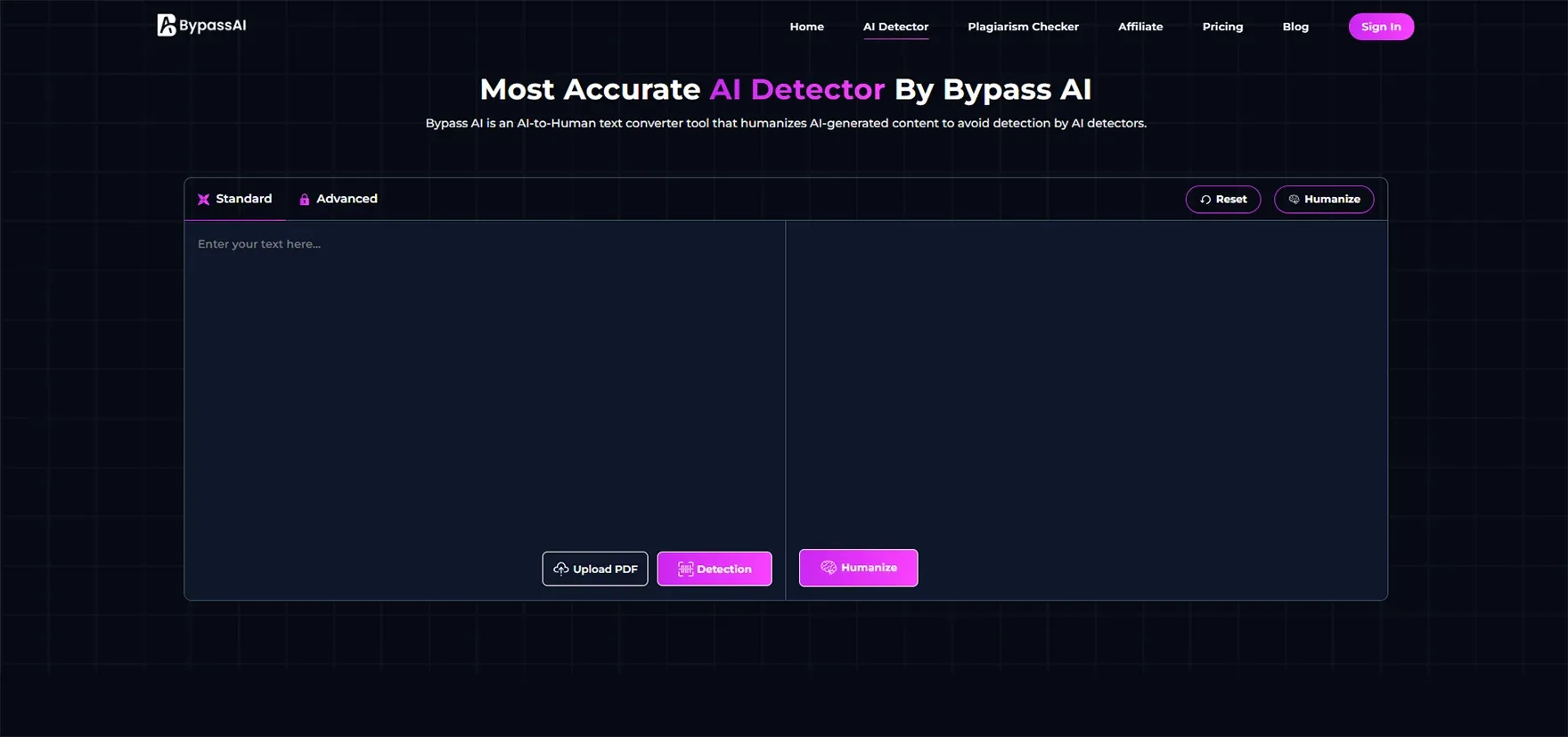
2. Turnitin
Now, let’s talk about teachers’ all-time favorite plagiarism checker – Turnitin. The reason we’re putting off Turnitin is because it’s a paid tool that comes with a relatively long free trial. Turnitin has recently launched its AI plagiarism checker feature, which is under AI writing detection capabilities. Teachers can simply upload their students’ comments to Turnitin as usual, and the AI can identify AI-created content along with plagiarized content.
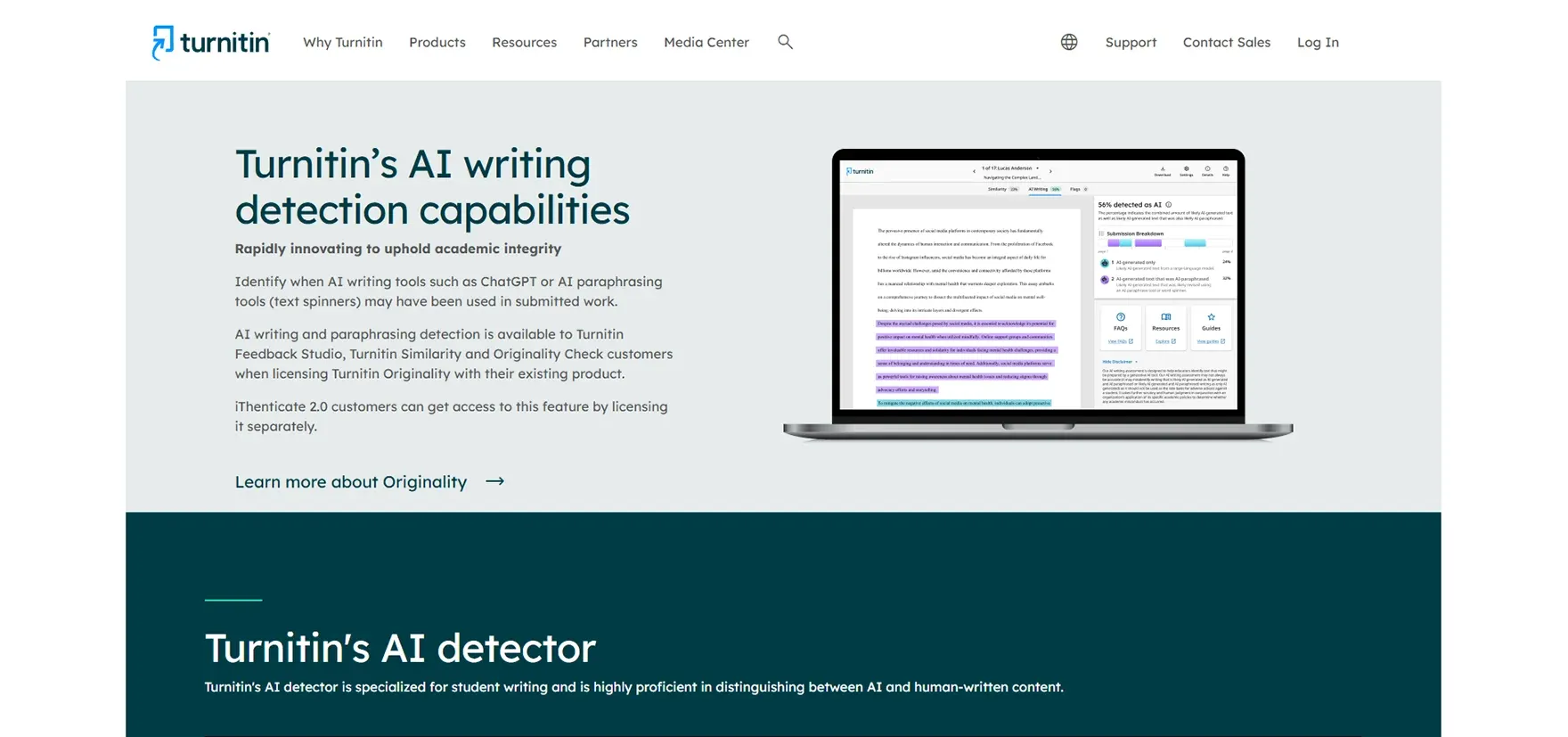
3. Winston AI
The Winston AI Detector is a highly accurate tool for detecting AI-generated objects in learning environments. It shows an accuracy of 99.98% and therefore can effectively help teachers in solving the challenges of AI-designed academic courses.
The Winston AI detector can distinguish between objects generated by AI models, such as Gemini, ChatGPT, LLAMA, Cloud, etc. Based on advanced algorithms and machine learning techniques that help ensure credibility and originality in tutorials in explanation
Vintons’ AI detection tool is trained on a wide range of academic data to detect anti-AI human reads and not provide false positives.
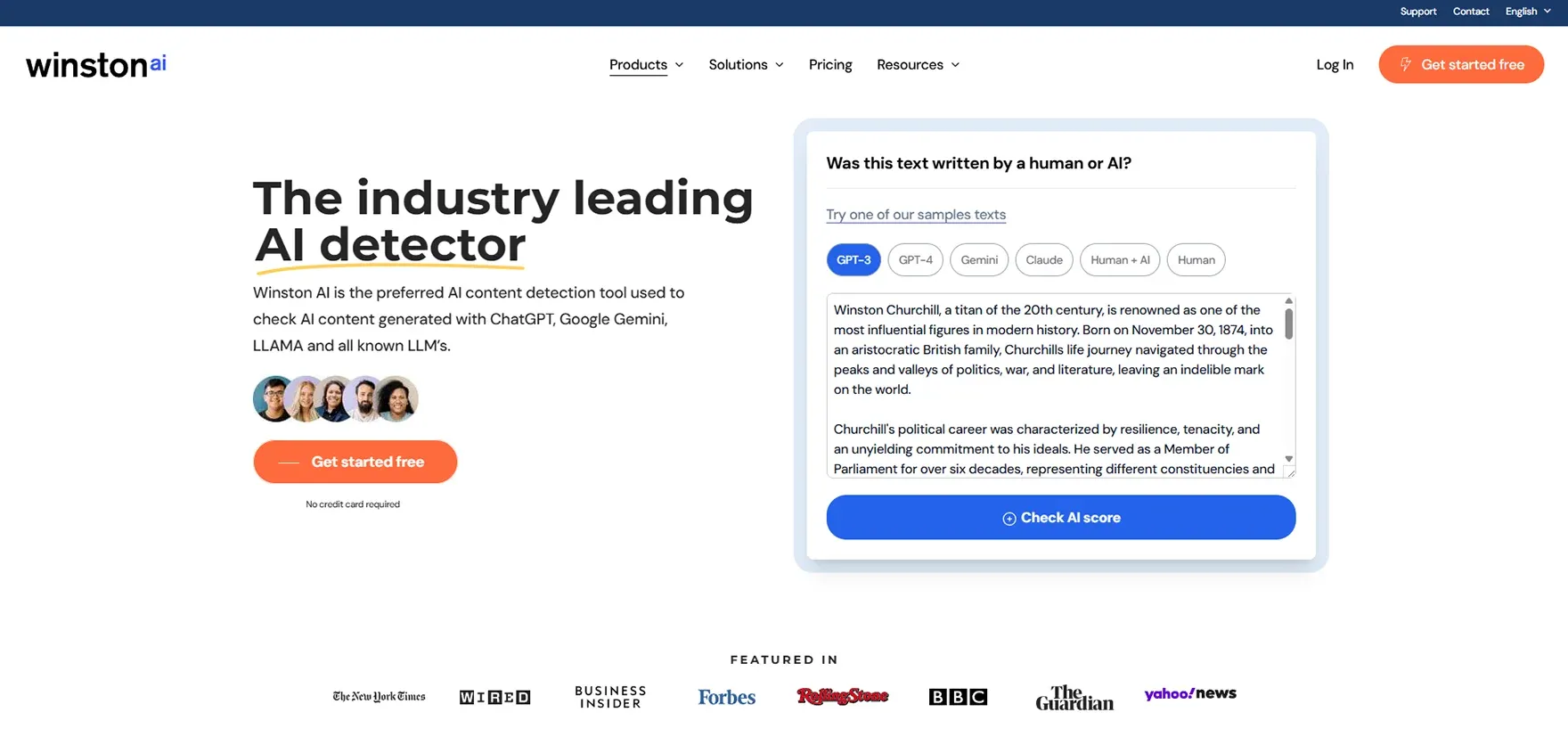
4. Originality
Originality AI is a state-of-the-art AI authoring platform that offers AI content recognition tools as well as plagiarism detection features.
Through advanced algorithms and advanced scanning capabilities, Originality AI gives teachers the tools they need to ensure the authenticity of their work.
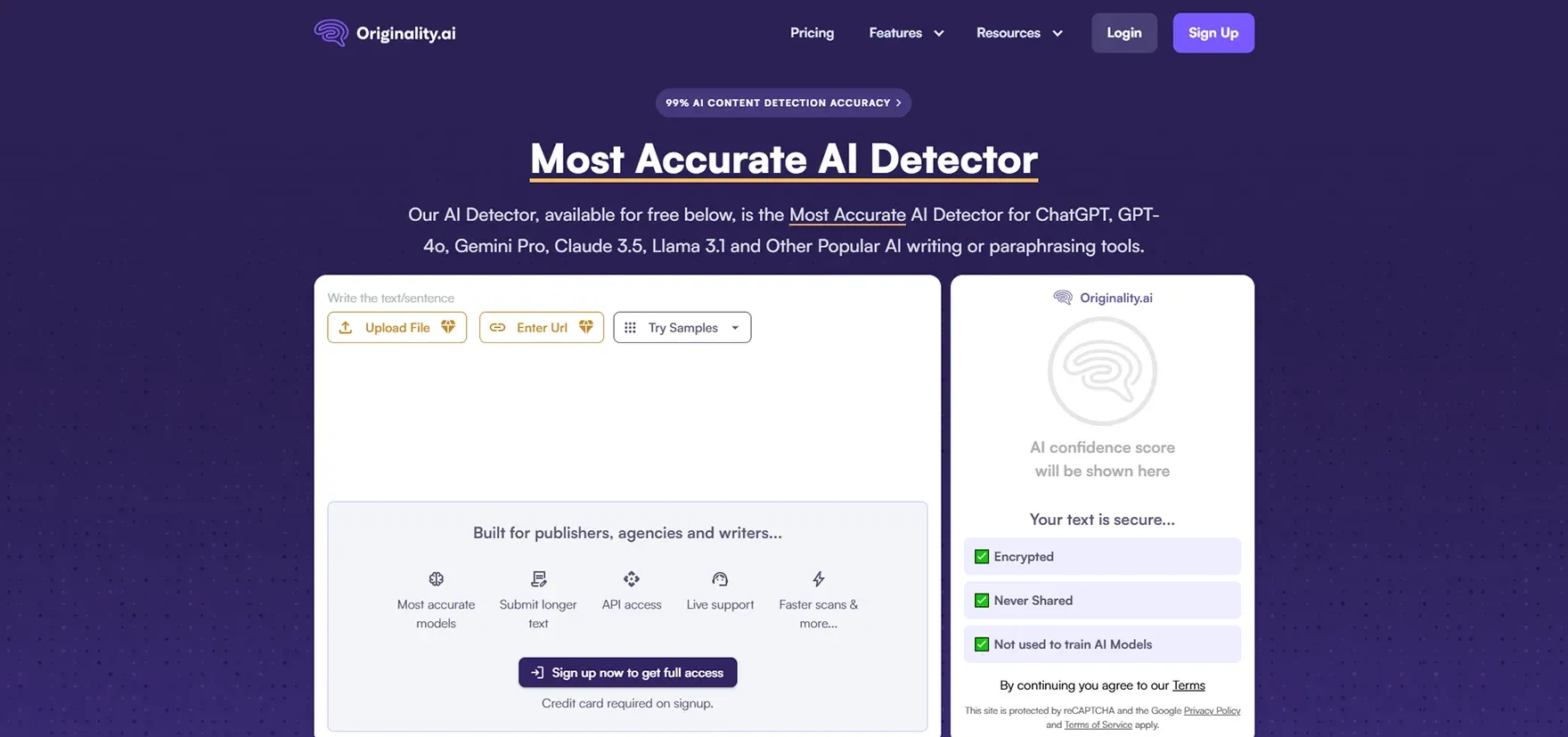
5. Copyleaks
CopyLeaks is one of the best-selling AI detectors out there, promising 99.1% accuracy in detecting AI-generated content. Not only is the tool aimed at academics, but it can also be used on other occasions by professionals in a variety of industries, from law to marketing. The platform is simple and easy to use, and you can use it online, though you will need to create a free account to increase the daily check limit. Alternatively, you can also download CopyLeak’s free Google Chrome extension to view social media posts or websites.
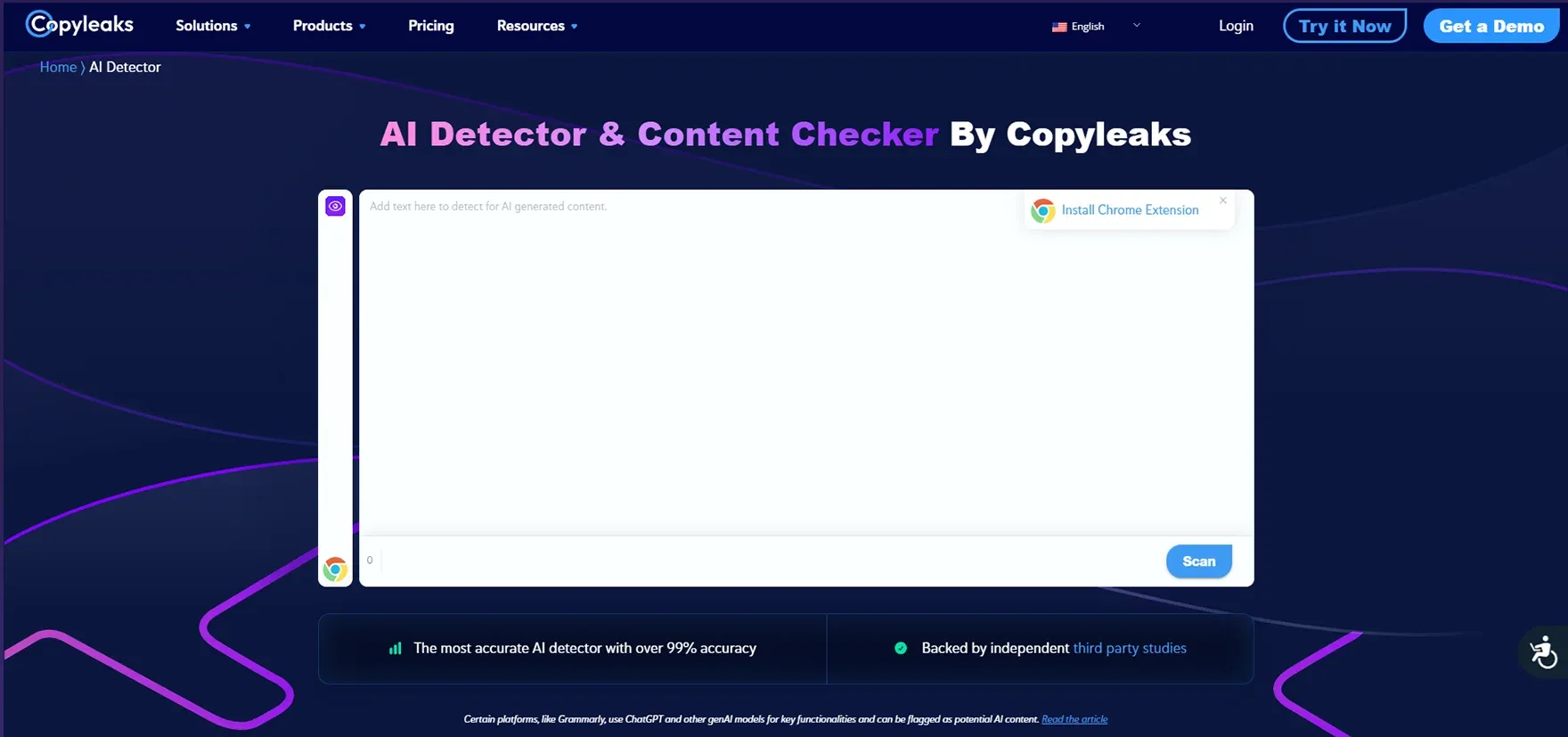
The Future of AI Detection in Education
As AI technology evolves, AI-induced identification methods will also evolve. Here are some future trends to watch:
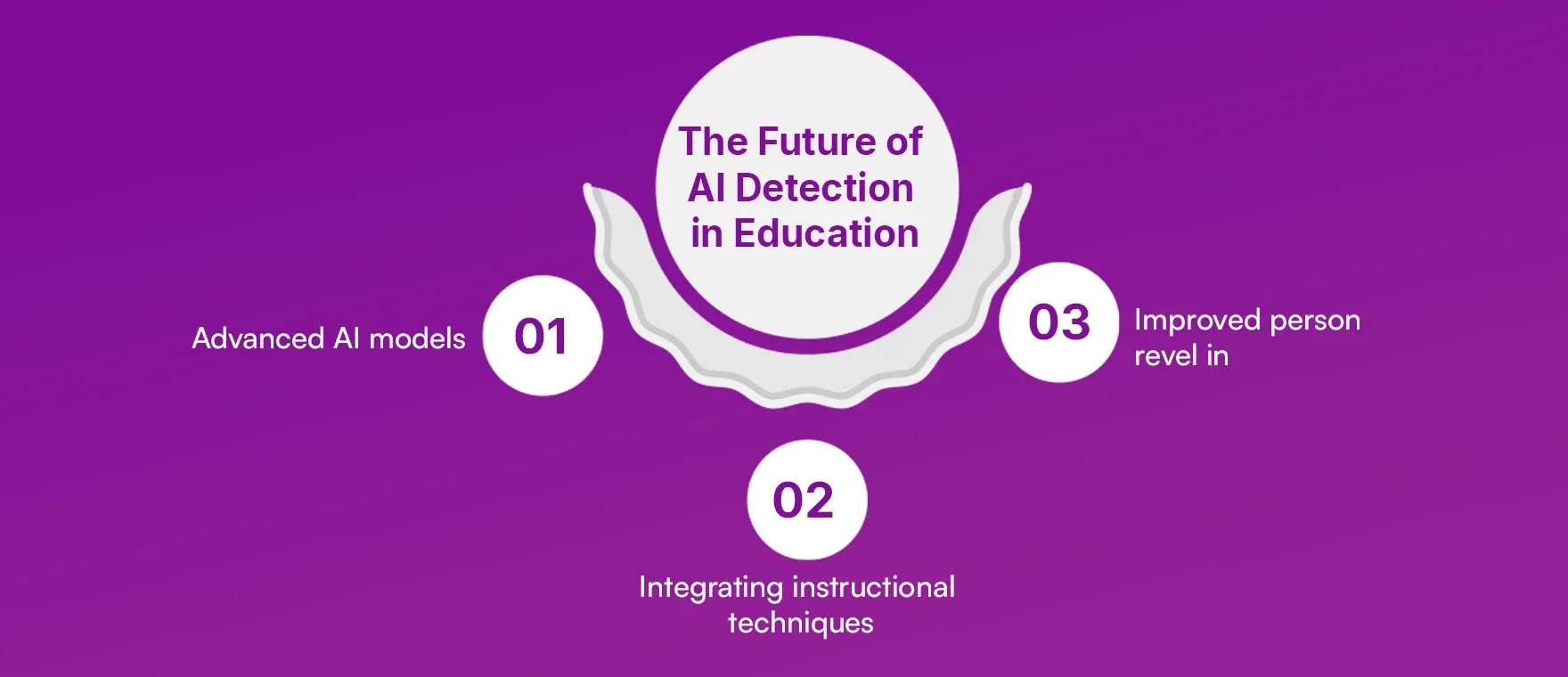
1. Advanced AI models: Future AI fashions will probable be higher at mimicking human textual content, making looking extra difficult. To stay ahead of those tendencies, detection gear will want to adapt.
- Example: Future variations of GPT-three or more modern ones like GPT-4 will even want to apply extra state-of-the-art detection algorithms.
2. Integrating instructional techniques: AI discovery equipment will stay included with studying management structures (LMS) and other academic strategies to enable seamless discovery.
- Application: Tools like Turnitin or WritingMate AI can be at once incorporated into systems like Google Classroom or Canvas for real-time AI discovery.
3. Improved person revel in: Improved control and reporting tools will make it less difficult for teachers to recognize and act on evaluation outcomes.
- Example: A dashboard that highlights questionable elements of statistics and provides certain causes will help teachers make knowledgeable choices.
How AI Content Detection Can Help Address the Risks in Education
In today’s educational environment where technology is becoming increasingly central, educators are challenged to distinguish between AI-designed content and original student work. By consciously managing this gap, teachers not only acknowledge the limitations of AI, but also ensure its responsible use in the classroom. Fortunately, AI content detectors make this process much easier.
Take the use of a tool like BypassAI IO, for example. If a teacher uses this detector and finds that it is 80% likely that a student’s paper is AI-generated, they have several different options. They may choose to let the student fail by not doing the original task or to give the student a second chance to repeat the task independently. This approach helps maintain academic integrity and ensures that students learn and demonstrate their understanding authentically.
Demonstrating AI content also empowers teachers to use AI resources more responsibly. By processing curriculum and external data through the detector, teachers can identify AI-generated content. This allows them to carefully consider and verify such materials before incorporating them into their teaching. In doing so, teachers can maintain high academic standards and integrity.
Conclusion
As AI continues to revolutionize education, the need for effective tools for identifying AI content is increasingly important. These tools not only help teachers maintain academic integrity, but also ensure that students are truly learning and developing their skills. While AI presents exciting opportunities for innovation in education, it also presents challenges that must be met responsibly. By leveraging AI and advanced technology, educators can address these challenges and create a balanced educational environment where technology enhances rather than detracts from learning.
FAQs
1. What is AI content discovery, and why is it important in education?
AI content recognition refers to the process of recognizing content generated by artificial intelligence. In education, it is important to maintain academic integrity by ensuring that student work is original and not generated by AI, thus enhancing the authentic learning experience.
2. How do AI content detectors work?
AI content detectors use machine learning algorithms and natural language processing to analyze content and determine if it is likely to have been created by AI. They provide scores that indicate the likelihood of AI intervention and help teachers assess the accuracy of student feedback.
3. What are some of the popular AI content discovery tools used in education?
Some popular AI leak tools include BypassAI IO, Turnitin, Winston AI, Originality.ai, and Copyleaks. These tools offer a variety of features to identify AI-generated products and ensure academic fidelity.
4. What are the potential risks of using AI in education without content identification tools?
Without detection tools, the risk of plagiarism and fraud increases, as AI makes it easier for students to do unoriginal work. Additionally, AI can introduce biases and errors, resulting in inappropriate grades and misinformed course recommendations.
5. How can teachers incorporate AI feature identification into their teaching practices?

